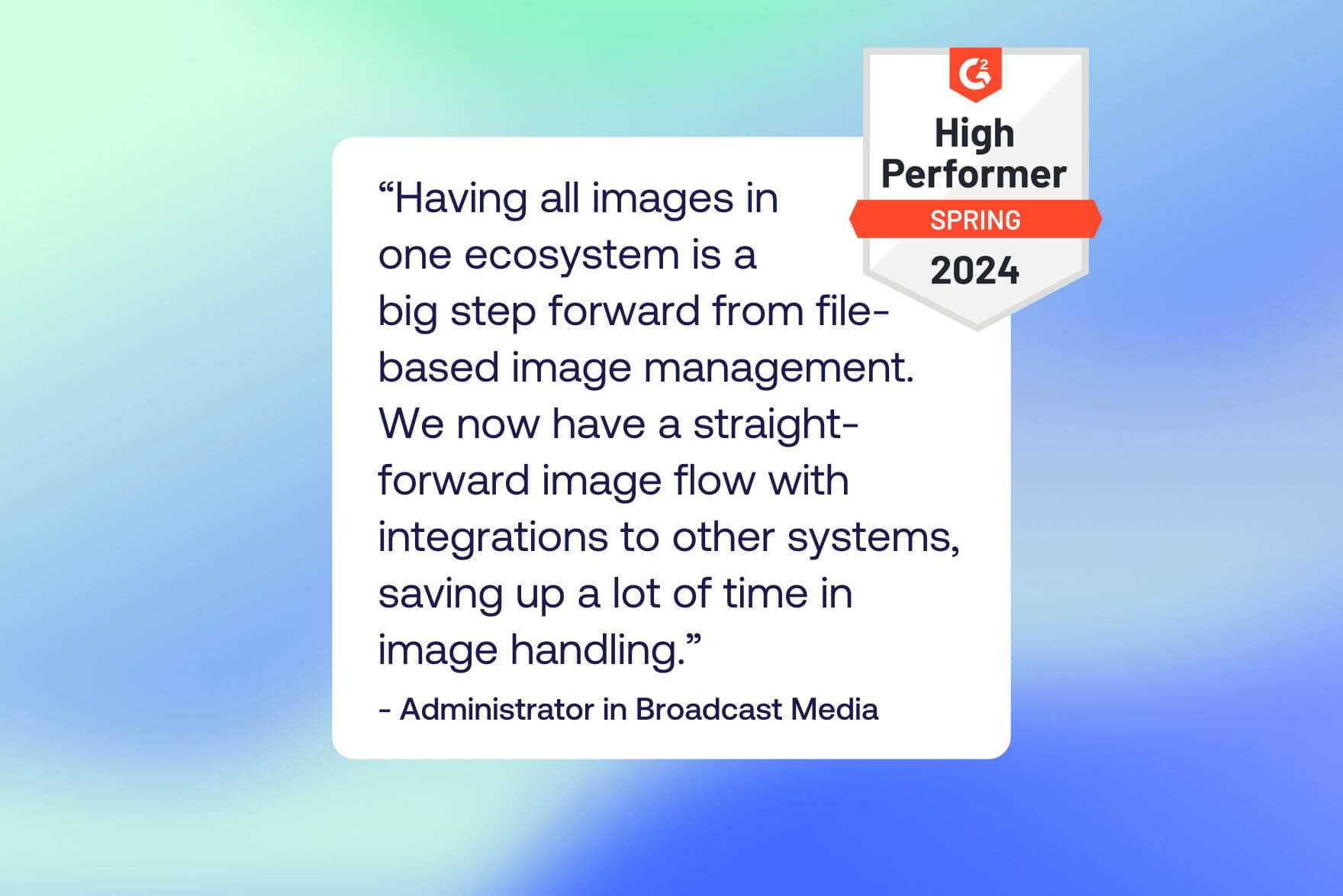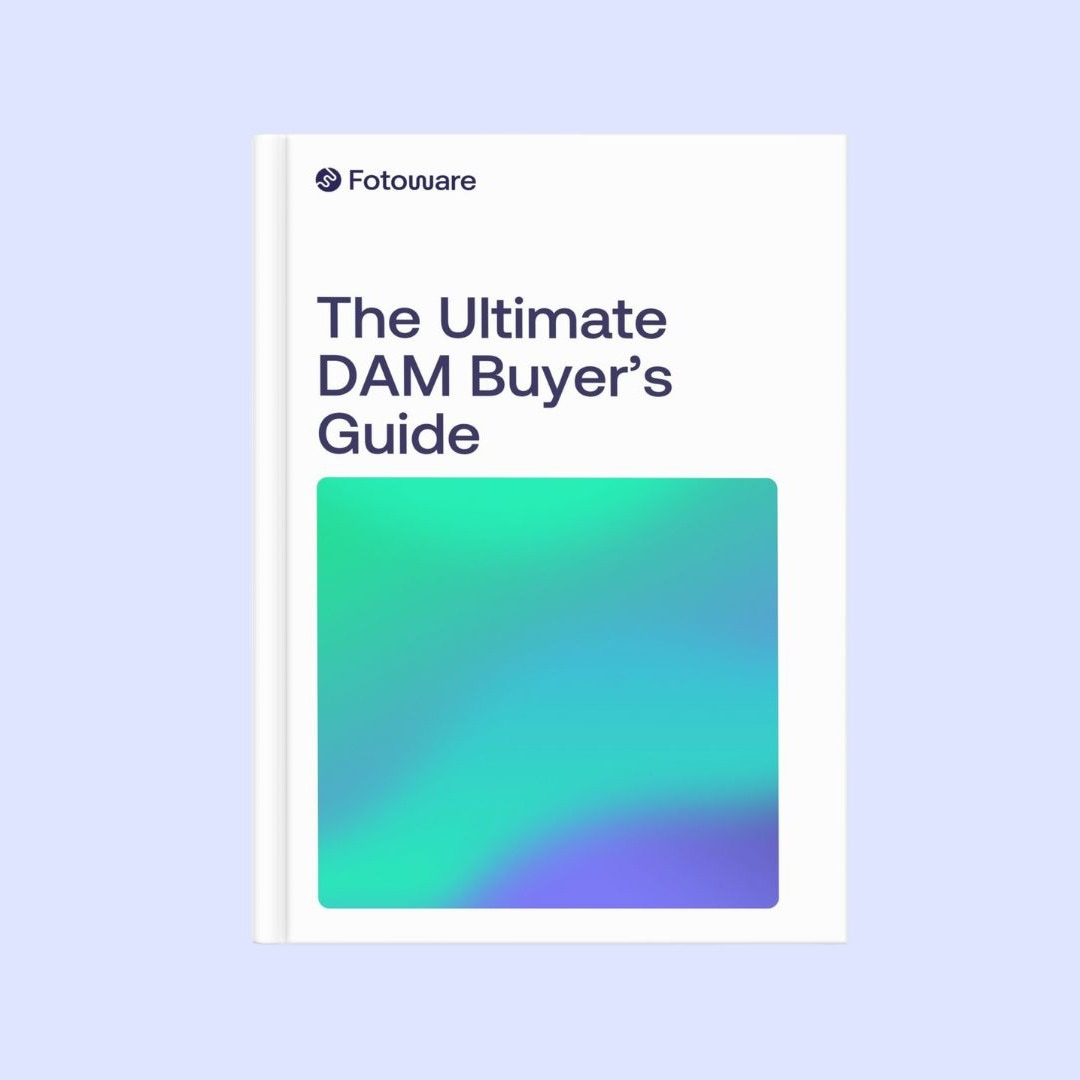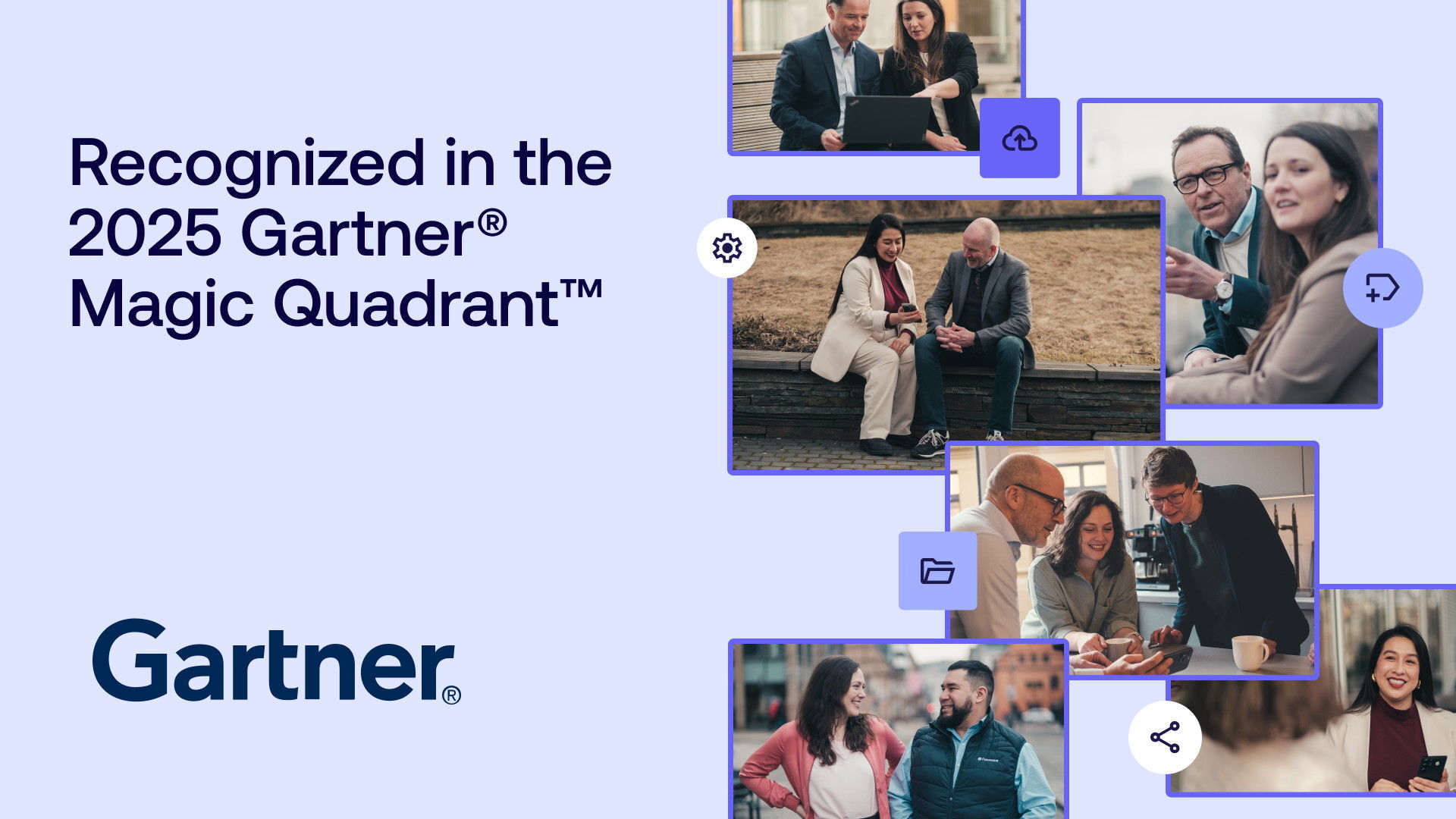
7 steps for buying Digital Asset Management software
Selecting the right Digital Asset Management (DAM) software for your organization can be a critical decision that directly impacts productivity, efficiency, and ultimately revenue. Navigating the software market and all its vendors and choices can be challenging. It is crucial to focus on making informed decisions by considering a few key factors.
In this article, we would like to provide you with some fundamental considerations for purchasing a Digital Asset Management system for your organization.
Alternatively, you can download the complete Digital Asset Management Buyer’s Guide here right away, to get more in-depth insights into what to pay attention to when planning to buy a DAM solution.

1. Identify your DAM use cases
Start by mapping your organization's specific challenges you aim to solve with a DAM system. Define needs and goals, such as improving control over your media assets, efficiency and productivity, enhancing brand consistency, or ensure better collaboration between team members or externally. Typical use cases found across different industries include:
- Archiving and Categorization,
- Omnichannel Content Delivery,
- Product Information Management,
- License and Rights management, and
- GDPR Compliance.
2. DAM power users
Identify your power users who will heavily rely on the system and involve them early in the process. Typical heavy users can be team members across IT, marketing teams, communication, HR, and legal teams. Make sure to understand their needs and motivations, ensuring the chosen DAM solution fits well with their content creation and management workflows.
3. Your content ecosystem
Ensure the DAM can integrate seamlessly with your existing tech stack, providing a central location for all digital files. Integration ensures seamless workflows across various platforms and business functions, and therefore maximizes its value across the organization. This can usually be done through out-of-the-box plugins or an open API to build custom integrations.

4. Technical requirements of your DAM
Focus on technical requirements, for example in terms of metadata management, access control, and compliance needs. Evaluate system security carefully and ensure your future DAM software provider commits to cybersecurity standards. When deciding between Software as a Service (SaaS) hosted in the cloud and on-premises solutions, consider your organization’s IT infrastructure, security requirements, and overall cloud strategy.
SaaS solutions offer flexibility and location-independent accessibility, making them ideal for modern offices. We recommend you to make sure your DAM is future-proof by selecting a scalable solution that can adapt to your growing needs, considering potential market trends.
Is your DAM future-proof? Find out with this checklist.

5. Explore the DAM market
Thoroughly research your options using reliable sources and review sites like Gartner, G2, or Capterra. Book meetings with vendors for non-binding demonstrations to familiarize yourself with your potential future DAM system and discuss to what extent it can be tailored to your company’s needs. Compare pricing models to ensure you only pay for what you need and don’t get surprised by high costs for addons or services. Make sure to also consider how much support from the vendor you will need in the future and take support and service plans into account.

6. DAM knowledge and industry expertise
Pay special attention to the expertise of the consultants and support team you will be working with on the vendor side. Are they knowledgeable and have experience in solving challenges for your industry or use case? Every organization requires their individually tailored solutions, but many challenges might be common in your industry and have been solved before. It can be rewarding to choose an established vendor with experience to tackle these effectively.
7. Involve internal stakeholders
Involve key stakeholders within your organization early in the process to present the benefits of digital asset management and potential ROI to gain their buy-in and support. Create a business case for summarizing key facts and to gain internal support. Consider appointing a buying committee – a group of various stakeholders from different departments who have an interest in buying a DAM. Their task is to take on different perspectives and ensure that the DAM software meets your organization's needs and returns the expected value.
By taking these steps and thoroughly assessing your requirements and available options, you can select the best Digital Asset Management software to align with your strategic objectives and sets your organization up for long-term success.

The Ultimate DAM Buyer's Guide
Learn everything you need to know when considering buying Digital Asset Management software for your organization in this free guide.

.png)
